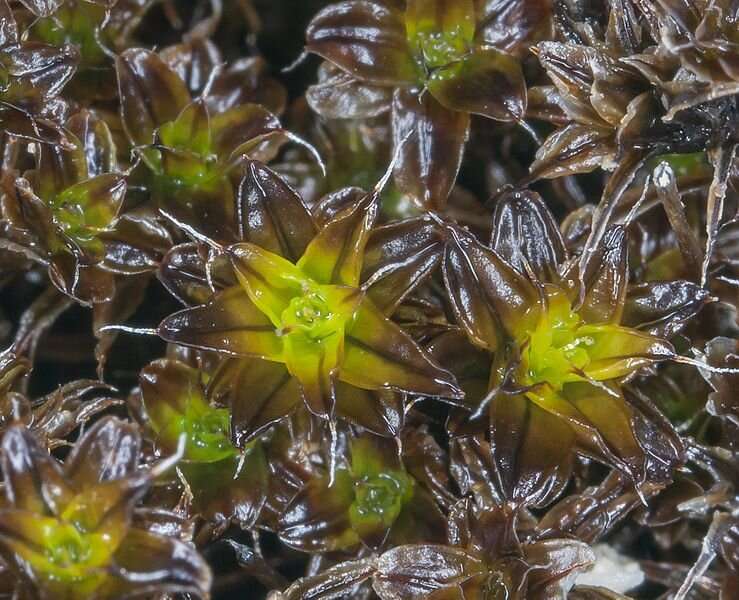Syntrichia caninervis (tortula moss). Credit: John Game from Berkeley, United States/Wikimedia Commons, CC BY 2.0
Spring, especially the freeze-thaw season, is considered the key period for the growth and carbon sequestration of desert mosses. It is not clear how the change in environment water and temperature affects the physiological characteristics of desert mosses in freeze-thaw season.
Syntrichia caninervis (S. caninervis) is a typical drought-tolerant moss, widely distributed in the Gurbantunggut Desert in northwestern China.
Researchers from the Xinjiang Institute of Ecology and Geography of the Chinese Academy of Sciences assessed the effects of snow cover and freeze-thaw cycles on the physiological characteristics of S. caninervis by manipulating the increase or removal of 65% snow and changes in the freeze-thaw cycles. They found that freeze-thaw cycles changed its physiological sensitivity to snow cover.
The study was published in Journal of Plant Physiology.
The researchers found that the changes in snow depth, freeze-thaw cycles, and their interaction significantly affected the plant water content, osmoregulatory substances content, antioxidant substance, and antioxidant enzyme activities.
Along with the decrease in snow depth and freeze-thaw cycles, the contents of free proline, soluble sugar, ascorbic acid reduced glutathione (GSH), and malondialdehyde (MDA), and superoxide dismutase (SOD), peroxidase (POD), and catalase (CAT) activities increased. This indicated that S. caninervis can resist environmental stress by regulating the content of osmotic substances and the activity of antioxidant enzymes.
However, the sensitivity of physiological characteristics of S. caninervis to snow cover and that to freeze-thaw cycles was different. Peroxidase and free proline were the most sensitive, while superoxide dismutase and catalase were the least sensitive.
The results showed that the physiological sensitivity of S. caninervis to snow was regulated by the number of freeze-thaw cycles, and the reduction in freeze-thaw cycles weakened the physiological sensitivity of S. caninervis to snow.
These results are vital for a comprehensive assessment of the maintenance of desert plant diversity under global climate change in the temperate desert.
More information: Benfeng Yin et al, Freeze-thaw cycles change the physiological sensitivity of Syntrichia caninervis to snow cover, Journal of Plant Physiology (2021). DOI: 10.1016/j.jplph.2021.153528
Provided by Chinese Academy of Sciences
























